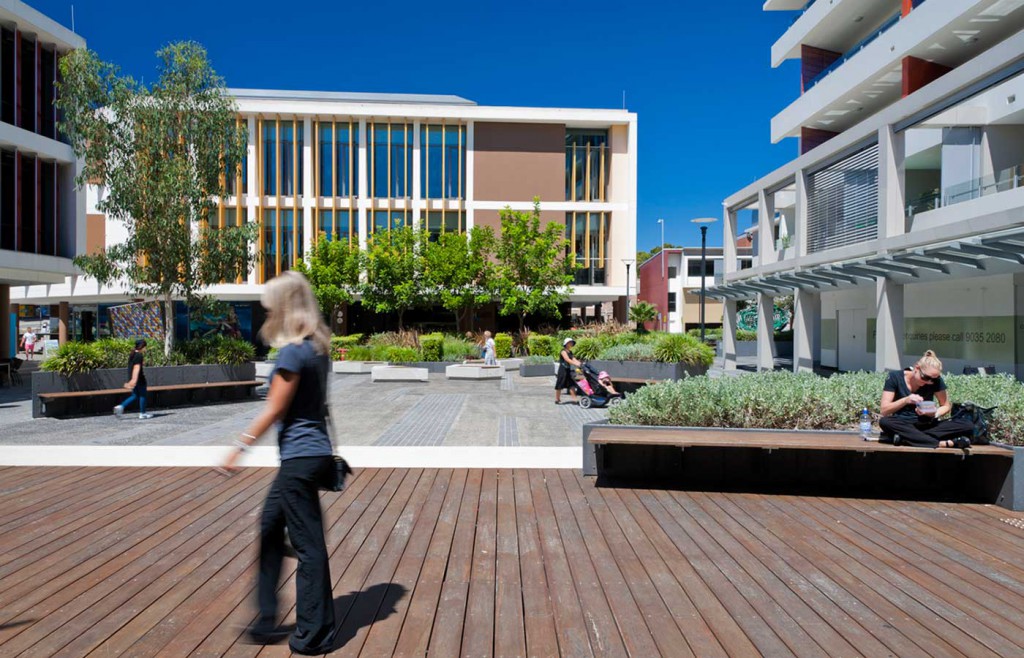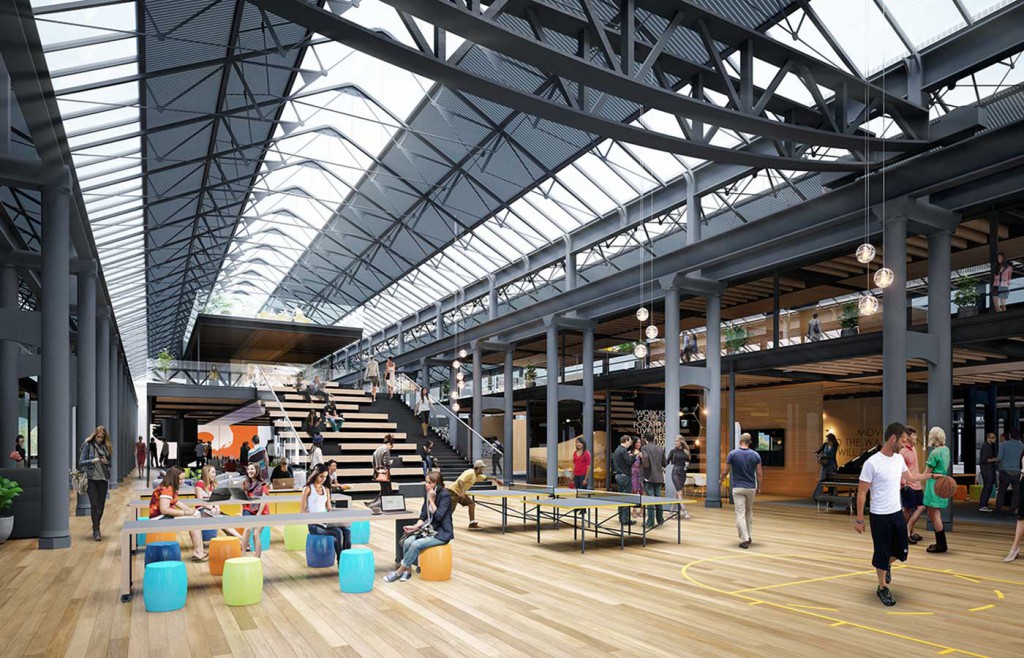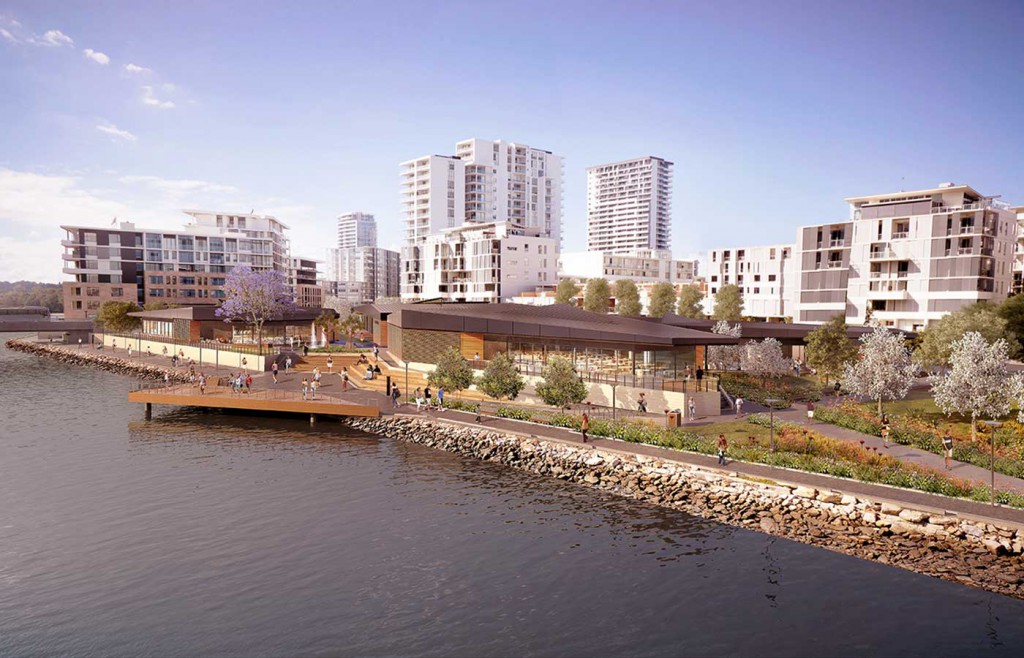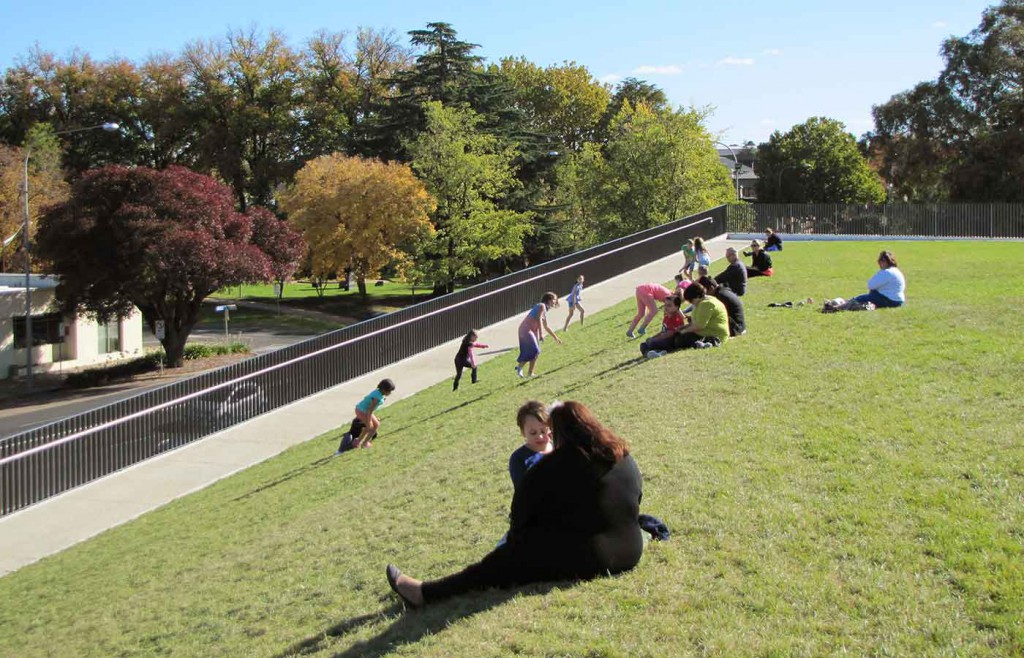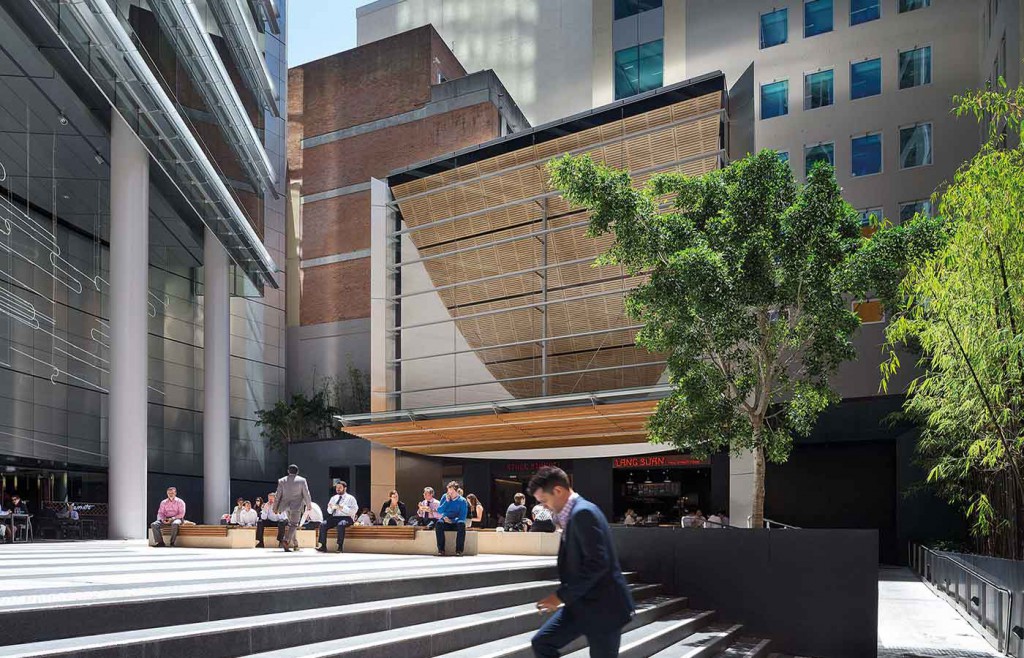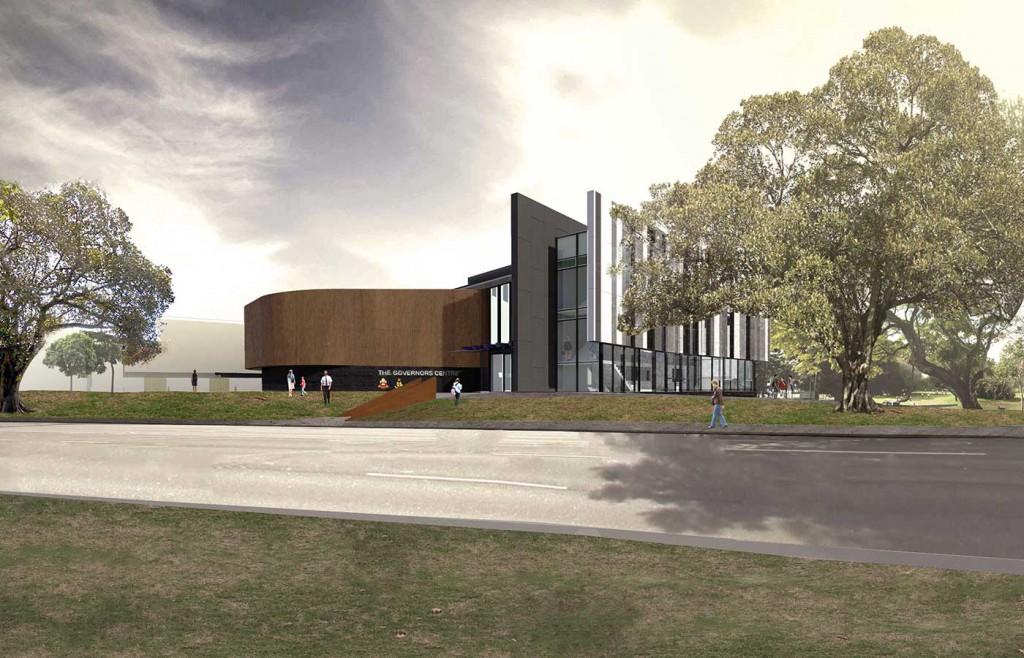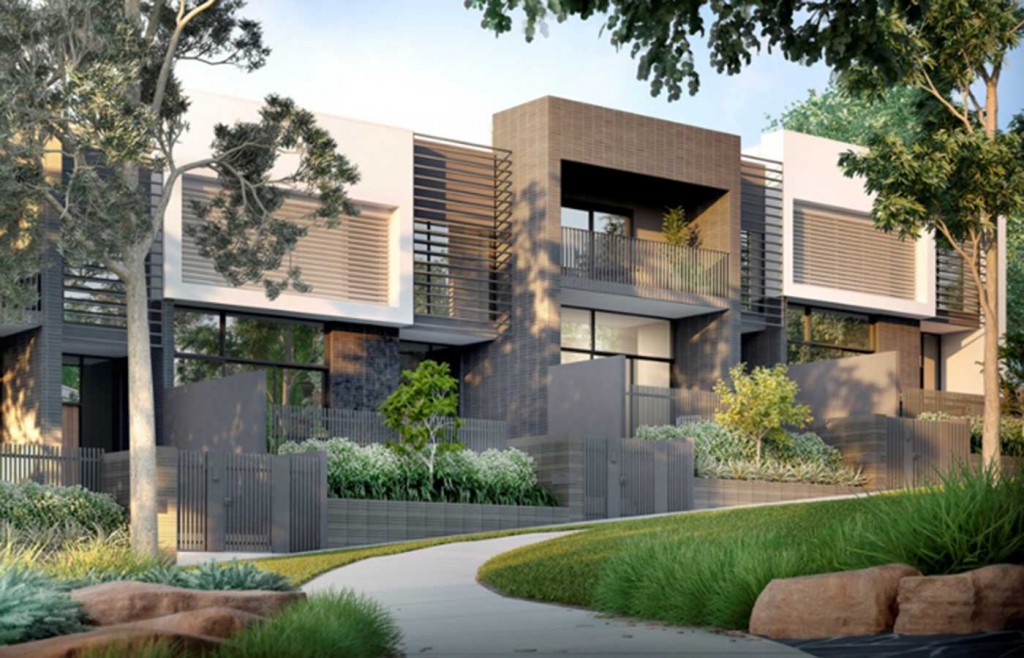



table of contents

previous articles

next articles
Feature article



CONTENTS
PATRONS NEWS
Allen Jack+Cottier
It is widely agreed that the creation of truly democratic, healthy, socially inclusive, workable and economically viable cities is reliant on the appropriate development of its public spaces. What defines the character, essence and identity of a city are those very places ‘owned’ by all, not its private ones. Even investing a little into quality public spaces delivers significant returns. The City of Sydney is a great example.
In all the significant urban transformation projects across Sydney and NSW that Allen Jack+Cottier is a part of, our focus is on the public domain and on city and placemaking benefiting all. This includes the large-scale masterplanning of major new developments designed to best meet the city’s population needs while maximising liveability and amenity, along with the smaller scale, such as the critical creation of a new Parramatta Road gateway site for Sydney’s rapidly expanding second CBD, Parramatta.
In every project, our intention is to: support sustainable travel, accessibility, health and wellbeing, public safety and social engagement; for all users to be well connected in beneficial, attractive streets and public spaces with environmental amenity; for each project to be the catalyst for public engagement, for social activities and to maximise opportunities for formal and informal gatherings, conversations, people watching, window shopping, outdoor dining, resting and more; and to offer public spaces regarded as desirable destinations with a clear identity, complementing the cityscape.
Bates Smart
A holistic approach to urban renewal is being fuelled by the demand for authentic work/life experience in city fringe regeneration areas. The low-tech revolution is driven largely by tech companies that eschew the futuristic ‘tech-utopia’ in favour of diverse environments that are anything but an office park.
Our research has focused on how to create a bona fide technology ecosystem, adaptable to future uses that aren’t even imaginable today. Bates Smart recently took part in a design competition for Australian Technology Park in Sydney.
Future workplaces will create or be part of an authentic urban environment, allowing work to happen everywhere. These places will be mixed-use, integrating cafes and restaurants, as well as shops and apartments: a place to live, work, and relax. Tomorrow’s workplace is the city.
The masterplan framework we propose creates a holistic city precinct, a self-sustaining ecosystem of diverse organisations in a range of tenancy sizes, from the incubated startup to campus size floorplates linked by bridges. In this arrangement, big companies support the small startups and small companies help the big firms innovate. They facilitate growth and nurture growing technologies.
We believe the answer lies in long life, loose fit, low energy buildings. We have identified five principles to building in flexibility and adaptability, where low-tech is the new high-tech:
1. High ceilings (3.5 m to soffit)
2. Concrete core cooling
3. Operable windows
4. Flexible occupation
5. Stays cold / stays warm
Our design proposes to break down the block size to increase the permeability of the site, increase its street frontage and create a series of low scaled buildings in keeping with the existing heritage stock. The heritagelisted locomotive workshops are refurbished to provide a range of office, retail and hospitality spaces. New office space is designed to provide ample daylight to the deep floorplates.
Gathering spaces, retail and wellness facilities are arranged at ground level to maximise activation and draw in the surrounding community. Public open spaces and a fine-grained network of laneways will create the diverse social conditions where urban life thrives.
Purpose-designed and highly-connected workplaces drive innovation in spaces to think, collaborate and create. Long life, loose fit buildings provide flexible, scalable and multifunctional spaces, with room for diverse companies to coexist.
Philip Vivian
Director, Bates Smart BKA Architecture
BKA Architecture
BKA Architecture is a practice of around thirty people with offices in Sydney, Newcastle and Byron Bay. Our projects categories include residential development, education, local government and individual houses.
BKA Architecture has recently submitted a masterplan for the development of a sporting hub and public park upgrade to Penshurst Park in Hurstville. The redevelopment will provide professional level training grounds for Cricket NSW, along with separate facilities for Football NSW and local youth service providers.
The community’s wellbeing will be improved with access to a new running track, exercise station, new grandstand, change rooms, and an upgraded playground – as well as an extension to the existing sports and recreation centre.
In addition to the dynamic Hurstville community, the project serves a wide group of stakeholders including Cricket NSW, Football NSW, local youth service providers, community sporting clubs and the existing Leisure Centre.
With the new Georges River Council as the client, the project will be delivered in stages by a team of consultants from Wood & Grieve Engineers, along with Sturt Noble Landscape Architects.
Cox Richardson
Cox Richardson is excited to be working in partnership with UNSW Built Environment and UDIA NSW to create an interactive app called Urban Pinboard. The app will connect government, industry and the community in a single conversation about how we build cities, provide infrastructure and create places for people.
The team is using innovative digital technology to drive smart city transformation and create conversations about the places we want to live in and how they can be built. The app will also connect users to the large, existing body of data that is used by the industry every day to allow for a more transparent evidence base in city building. This partnership between COX, UNSW and UDIA is dynamic, with the ability to relate rigorous academic research to existing practice and industry experience.
Crone Architects
Diversity and adaptability of the built environment is integral to successful placemaking strategies. Maximising opportunities for communal synergy and information exchange is not achieved through overly prescriptive conditions. Places today need to benefit a range of users and consider places within their current context but also relative to the future character and conditions of an area.
Socially inclusive and malleable built environments will drive and support the knowledge-intensive economies of the future. In a fast paced world, it is essential that our buildings work with us, not against us. Through careful and considerate design, the spaces in which we live, work and consume can help us connect better with others. Every project needs to engage with people first, catering to the subtle nuances of relationships.
Placemaking cannot be achieved through progressive architecture and urban design strategies in isolation. It is through insightful consultation that we can get to the heart of a place and the best result for communities. Real unification of architects, thinkers, designers, artists, economists, social planners and end users is a good place to start.
Ashley Dennis
Associate, Crone Architects
Francis-Jones Morehen Thorp
FJMT was recently awarded the 2016 City of Sydney Lord Mayor’s Prize at the NSW Architecture Awards for Liberty Place, in recognition of work that improves the quality of the public domain through architectural and urban design excellence.
Uniting public, corporate, hospitality and retail architecture into a cohesive urban design, Liberty Place provides an enabling, flexible and human environment and is a unique offering for Sydney’s CBD and its community. The ‘through-site link’ connecting Pitt St and Castlereagh St with its public plaza is highly popular with tenants, workers and visitors as a place to eat, meet and hold events.
Described by Elizabeth Farrelly as ‘a genuine urban harbour’, the scheme departs from ‘modernist icons [with] open plaza at base’ to achieve new urban places and connections. Places for people that will contribute to the layers of memory and experience of life within the city.
Mirvac
Mirvac’s vision is to transform the Eastern Golf Course into a landmark masterplanned community featuring approximately 800 dwellings, including a mix of vacant land allotments, Mirvac homes and medium density living options.
Featuring extensive public open space including heritage trees and existing lush vegetation, the spectacular fairways will be masterplanned to offer residents beautiful vistas of the local area, as well as city views.
Mirvac Design creates homes with an emphasis on low maintenance lifestyle and architectural innovation. Modern and vibrant in its vision, Tullamore is set to provide an aspirational living environment that represents the quality, placemaking and workmanship that is fundamental at the heart of all Mirvac masterplanned communities.
House planning is site specific with the program carefully arranged to capitalise on passive environmental opportunities by responding to orientation, optimising cross ventilation and passive solar design principles, as well as incorporating extensive areas of glazing and openings, where appropriate, to allow the integration of internal and external living areas.
We also focus on a contemporary palette of external materials, colours and textures, selected to complement the landscape context and create a sense of unison amongst the built forms while also providing a subtle individuality, reinforcing a sense of place and shared community values.
Tanner Kibble Denton Architects
The Governors Centre, a shared performing arts centre for Sydney Girls High School and Sydney Boys High School, received development approval from the City of Sydney in June. The new centre, located on Cleveland Street at Moore Park, includes a 400-seat auditorium and a new multipurpose examination hall and is entirely funded by the school community.
TKD Architects has also been recently appointed to undertake the renewal and transformation of the heart of six Charles Sturt University campuses in regional NSW, including Wagga Wagga, Albury, Bathurst, Orange and Dubbo.
Spread over three years, this project seeks to create a series of new social spaces both in the public domain and within key campus facilities, fostering collaboration and interaction whilst providing a real identity to each campus. Allied to the campus hubs study is a program of work to upgrade and transform the teaching and learning spaces of each campus.
Andrew La
National Housing Design Director, Mirvac











